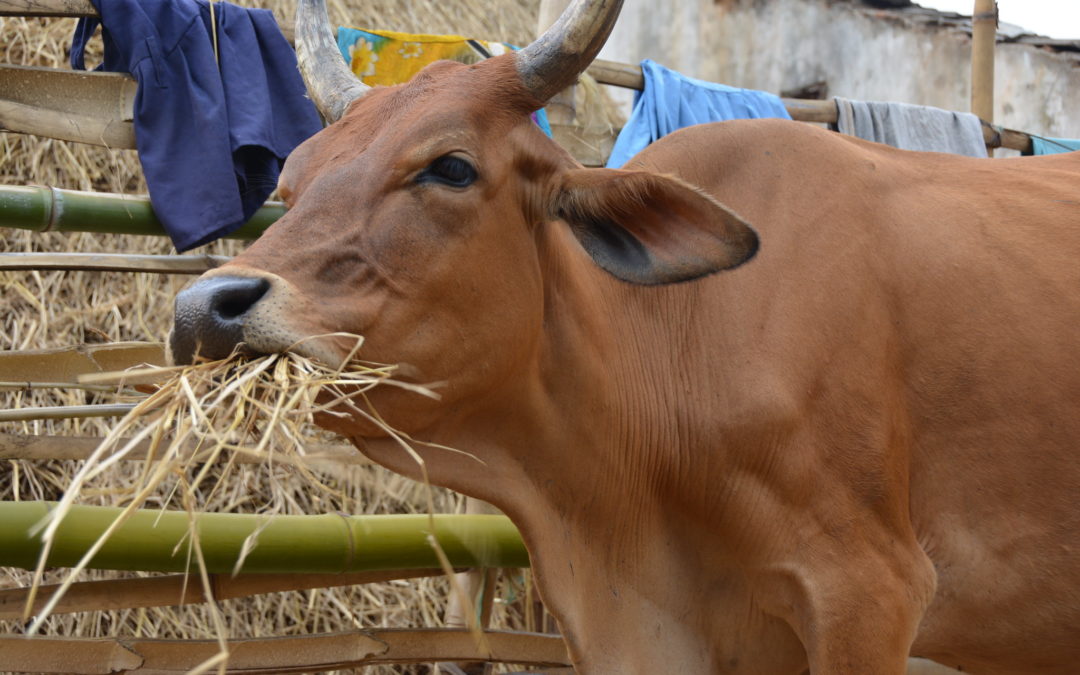What do livestock eat in Tanzania, India and Vietnam? Explore crowd-sourced data
You are what you eat, as the old adage goes. This also applies to livestock, as feeds closely determine an animal’s health, and its ability to produce high-quality milk, meat, and eggs. By the same logic, better animal products provide better nutrition to people and more income to livestock-keepers. Farmers, extension workers, researchers, and policymakers working on livestock need a good understanding of animal feeds. Now for the first time, you can visually explore standardised data on what livestock eat in low-and middle-income countries. The data behind the visualisation was generated using the Feed Assessment Tool (also known as FEAST) and is the product of thousands of data uploads from over 150 sites in 14 countries.

“There is a real dearth of data as to what livestock are fed,” explains Prof Alan Duncan of the University of Edinburgh’s Global Academy for Agriculture and Food Security and the International Livestock Research Institute (ILRI). Duncan helped initiate the development of FEAST Tool, which helps users assess overall availability of feeds, the quality, and the seasonality in a particular site. Users collect the data in a standardised format and are encouraged to submit their results to the open-access FEAST Global Data repository, launched in 2016.
“This tool was originally developed to help farmers, but it has generated a wealth of farmer-based data that we felt was useful for a wider community,” explains Duncan, who worked with members of the Livestock Data for Decisions (LD4D) community to visualise the data.
New ways to explore livestock feed data
- Explore how overall feed availability changes month by month or season by season in a particular site
- See how feed sources change depending on the season
- Explore how different sources of feed contribute to animal diets over the course of a year
Putting data into use
The data visualisation offers new insights for decision-makers. “While the FEAST tool helps identify possible improvements in a particular site, the rich body of FEAST data offers insights on overall trends, gaps, and opportunities,” he explains. For example, the climate change modelling community needs to understand what livestock are fed in order to calculate emissions from the sector.
This kind of data could also be used to develop a better understanding of planted forages, and what different forages are used in different countries. “Sound feed-related data are a requisite for the formulation of good policies for sustainable livestock development,” says Harinder Makkar, an International Development Expert in sustainable livestock production
Building momentum
The FEAST tool and the global data repository are available to anyone working on livestock feeds and to anyone more generally interested in understanding the livestock sector in low-and middle-income countries. The data is free to use, and contributions are also welcome!
As well as these high-level visualisations, further data visualisations have been developed on the FEAST data repository hosted by ILRI. This site also allows a flexible download of the raw data in a range of formats.
More information
- Explore the FEAST Visualisation
- FEAST website
- FEAST Global Data Repository
- Video intro to FEAST assessment tool
Vanessa Meadu is a Communications and Knowledge Exchange Specialist with SEBI-Livestock, which convenes the Livestock Data for Decisions (LD4D) Community of Practice. LD4D is dedicated to improving the landscape of livestock data by encouraging better use of existing data and analysis and supporting collaboration on new and innovative data solutions.
Header photo: S. MacMillan (ILRI) (source)
February 9, 2021
Vanessa Meadu





